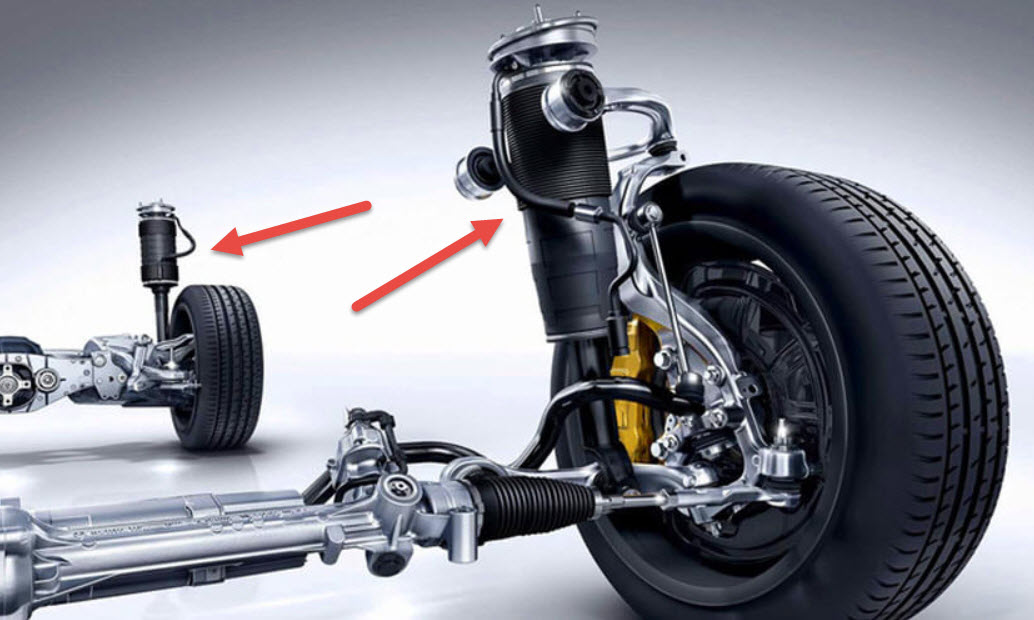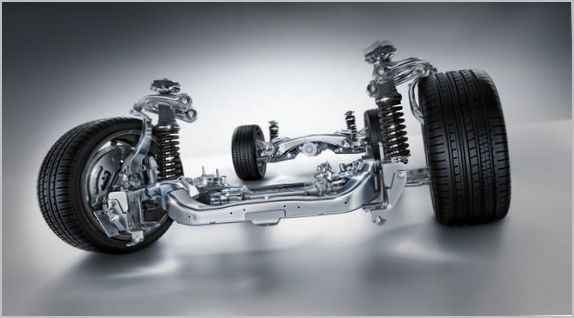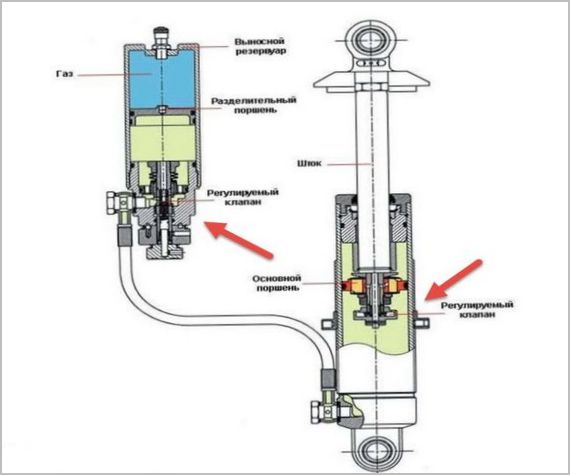
What is and how adaptive suspension works
Content
One way to improve a car's suspension is to adapt it to the nature of the road, speed, or driving style. It is possible to implement this with the use of electronic equipment and high-speed electromagnetic, pneumatic and hydraulic actuators. The same car, with a quick change in suspension characteristics, can acquire individual abilities of a road sports car, SUV or light truck. Or simply significantly improve passenger comfort.

Fundamentals of organizing adaptation
To obtain the ability to adapt to external influences or driver commands, the suspension must acquire an active character. Passive mechanisms always unequivocally react to certain influences. Active ones are able to change their characteristics. To do this, they have a control electronic unit, which is a computer that collects information from sensors and other vehicle systems, receives instructions from the driver and, after processing, sets the mode to the actuators.

As you know, the suspension consists of elastic elements, damping devices and a guide vane. Theoretically, it is possible to control all these components, but in practice it is quite enough to change the properties of dampers (shock absorbers). This is relatively easy to do with acceptable performance. Although if the reaction speed is not required, for example, the parking mode, the change in clearance or static stiffness is subject to adjustments, then it is quite possible to adapt the suspension configuration for all its components.
For operational adaptation, it will be necessary to take into account many input parameters:
- data on road surface irregularities, both current and upcoming;
- movement speed;
- direction, that is, the angle of rotation of the steered wheels and the angular acceleration of the car as a whole;
- position and speed of rotation of the steering wheel;
- driver's requirements according to the analysis of his driving style, as well as those entered in manual mode;
- the position of the body relative to the road, the parameters of its change over time;
- radar-type sensor signals that analyze the condition of the coverage in front of the car;
- longitudinal and transverse accelerations of the car, engine and braking system operating modes.
The control block program contains algorithms for responding to all incoming signals and for accumulating information. Commands are typically sent to the electrically controlled shock absorbers of all wheels, individually for each, as well as to the active couplings of the anti-roll bars. Or to devices that replace them when working as part of fully hydraulically controlled suspensions, as well as the most high-tech products that work exclusively on electromagnetic interaction. In the latter case, the speed of response is so high that almost ideal behavior can be achieved from the operation of the suspension.
System composition
The complex includes devices that ensure the regulation of damping properties and dynamic stiffness, as well as minimizing body roll:
- suspension controller with microprocessor, memory and I/O circuits;
- active mechanisms for parrying roll (controlled anti-roll bars);
- complex of sensors;
- shock absorbers that allow electronic control of stiffness.
The dashboard controls, most often this is an on-board interactive display, the driver can set one of the operating modes according to his preferences. Predominance of comfort, sportiness or off-road ability is allowed, as well as more advanced customization of functions with mode memory. The accumulated adaptation can be promptly reset to the original settings.

Requirements for transverse stabilizers are always controversial. On the one hand, their purpose is to ensure minimal body roll. But in this way the suspension acquires the character of dependence, which means comfort is reduced. When driving on bad roads, a more valuable feature will be even more freedom of individual wheels to achieve maximum articulation of the axles. Only in this way, all suspension travel reserves will be fully used to ensure constant contact of the tires with the coating. A stabilizer with a constant stiffness, which is usually a simple bar of spring steel, working on the principle of a torsion bar, will not be able to serve equally well in all conditions.
In active suspensions, the stabilizer is split, with the possibility of electronic regulation. Different principles can be used to control the reduced stiffness. Some manufacturers use preload for twisting by an electric motor with a gearbox, others use a hydraulic method, installing hydraulic cylinders on the stabilizer or its attachment to the body. It is also possible to completely imitate the stabilizer bar with individual hydraulic cylinders operating in parallel with the elastic elements.
Adjustable shock absorbers
A conventional shock absorber has the property of changing its dynamic stiffness depending on the speed and acceleration of the rod movement. This is achieved by a system of throttling valves through which damping fluid flows.

For operational control of bypass throttles, two ways are possible - installing spool-type electromagnetic valves or changing the properties of the liquid in a magnetic field. Manufacturers use both methods, the second less often, since it will require a special fluid that changes its viscosity in a magnetic field.
The main operational differences of adaptive suspensions
Active suspensions with the property of adaptation provide the ability to programmatically control the consumer qualities of a car on any road:
- the body always maintains a given position relative to the road, deviations from which are determined only by the speed of the adaptation system;
- the wheels have the maximum achievable constant contact with the coating;
- the level of acceleration in the cabin from bumps is much lower than with a traditional suspension, which increases the comfort of the trip;
- the car is better controlled and more stable at high speeds;
- the most advanced systems can anticipate bumps by scanning the road ahead of the wheels and adjusting the dampers in advance.
The disadvantage, as with all complex systems, is one - high complexity and the associated reliability and cost indicators. Therefore, adaptive suspensions are used in the premium segment or as optional equipment.
Algorithms of work and a set of equipment are constantly becoming more complex and improved. The main goal of developments in the field of active adaptive suspensions is to achieve maximum rest of the car body, whatever happens to the wheels and their associated unsprung masses. In this case, all four wheels must constantly maintain contact with the road, keeping the car on a given trajectory.